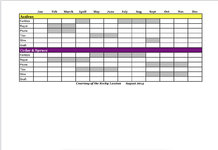Apex37
Chumono
Is there anything out there that has a calendar like guide on maybe repotting times, pruning times, defoliation, wiring, etc. that can be easy for beginner to understand and follow? Maybe something that delves into each major bonsai species and what to do each quarter?




